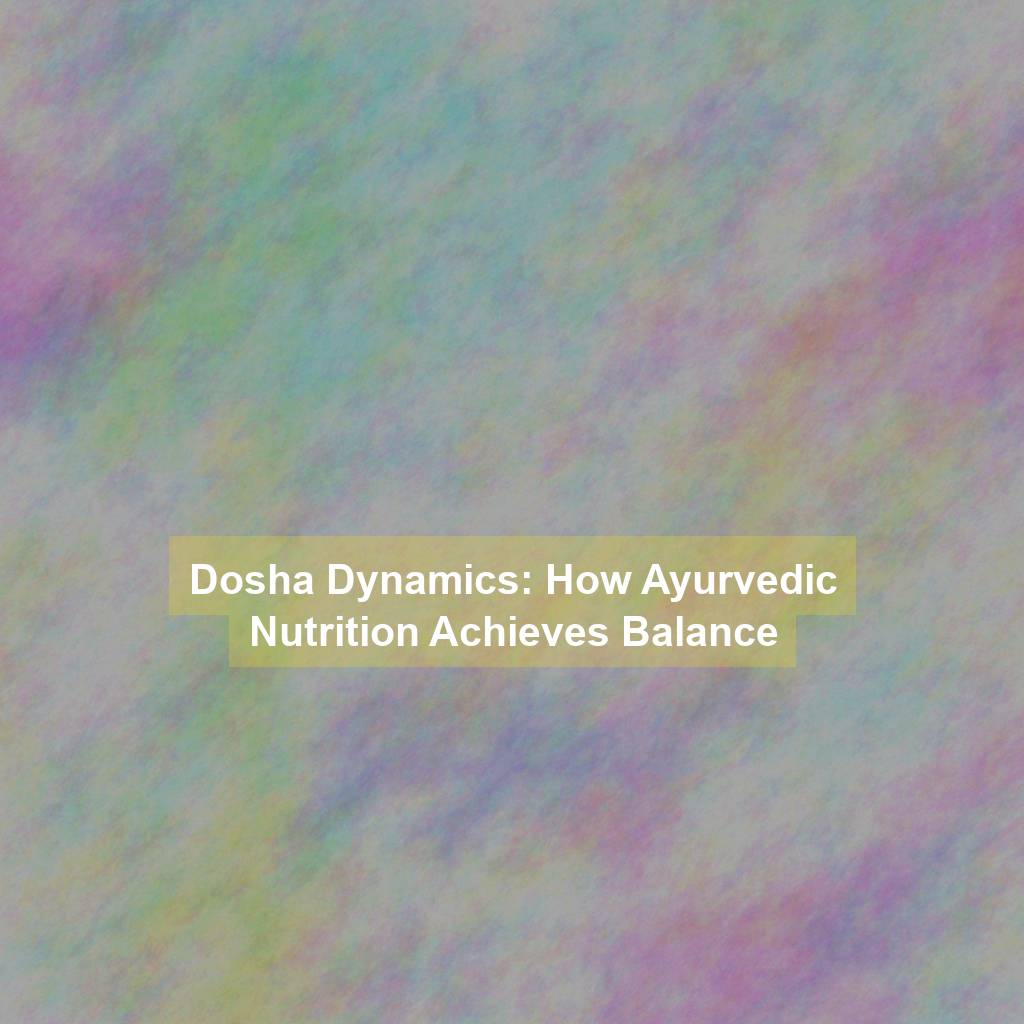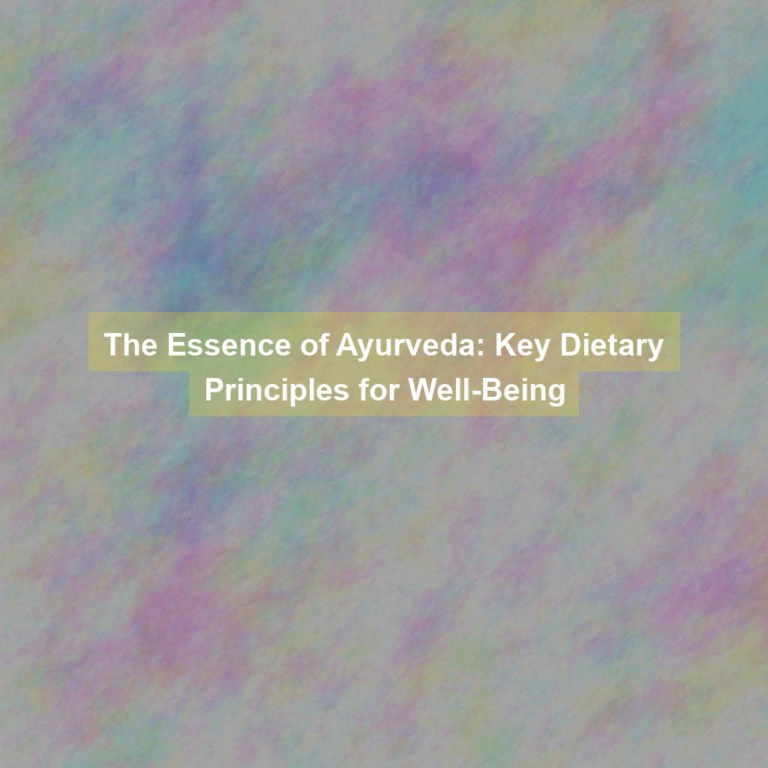Are you struggling to find balance and harmony in your life? Understanding the dosha dynamics and how Ayurvedic nutrition achieves balance could be the key to unlocking a healthier and more harmonious lifestyle.
By exploring the influence of nutrition on the three doshas – Vata, Pitta, and Kapha – you can gain insights into how to tailor your diet to achieve optimal well-being.
But how exactly does Ayurvedic nutrition achieve this balance, and what specific dietary strategies can be employed to harmonize the doshas?
Understanding the Three Doshas
To achieve a better understanding of Ayurvedic nutrition, it’s essential to grasp the concept of the three doshas and their impact on your overall well-being. In Ayurveda, the three doshas – Vata, Pitta, and Kapha – are the fundamental energies that govern our physical and mental processes. Each person has a unique combination of these doshas, which influences their individual constitution, or Prakriti. Understanding your dominant dosha can help you make dietary choices that support balance and harmony within your body.
Vata, associated with the elements of air and ether, governs movement and communication in the body. If Vata is your dominant dosha, you may benefit from warm, nourishing foods that help ground and stabilize your energy.
Pitta, linked to the fire and water elements, governs digestion and metabolism. If Pitta is predominant, focusing on cooling, hydrating foods can help maintain a balanced state.
Kapha, connected to earth and water, governs structure and stability. Those with a Kapha-dominant constitution may thrive on warm, light foods that stimulate digestion and energize the body.
The Influence of Nutrition on Doshas
Nutrition plays a crucial role in influencing the balance of your doshas and maintaining your overall well-being in Ayurvedic practice. The foods you consume have a direct impact on the doshas within your body.
For example, consuming warm, heavy foods can exacerbate the Kapha dosha, leading to sluggishness and congestion, while consuming spicy, hot foods can aggravate the Pitta dosha, resulting in inflammation and irritability. On the other hand, incorporating light, dry, and warm foods can help pacify Kapha, while favoring cooling, hydrating foods can balance Pitta. Similarly, Vata can benefit from well-cooked, nourishing, and grounding foods to counteract its dry and cold nature.
By understanding the qualities of different foods and their effects on the doshas, you can make conscious choices to create harmony and balance within your body.
Furthermore, the timing and combination of foods also play a significant role in influencing the doshas. Eating meals at consistent times and pairing foods that complement each other can support the equilibrium of your doshas.
For instance, combining all six tastes – sweet, sour, salty, pungent, bitter, and astringent – in your meals can help maintain balance among the doshas. Additionally, being mindful of how foods are prepared and consumed can further support doshic balance.
Balancing Vata Dosha Through Nutrition
The influence of nutrition on doshas extends to specific dietary strategies for balancing Vata, which can help counteract its dry and cold nature. To balance Vata dosha, focus on incorporating warm, cooked, and nourishing foods into your diet. Opt for well-cooked grains like rice and quinoa, warming spices such as ginger, cinnamon, and cumin, and plenty of healthy fats like ghee and sesame oil. Including sweet, sour, and salty tastes in your meals can also help pacify Vata.
Emphasize the consumption of cooked vegetables, especially root vegetables like sweet potatoes and beets. Additionally, favor foods that are naturally sweet such as fruits, whole grains, and dairy products. It’s important to prioritize regular meal times and avoid skipping meals, as Vata dosha benefits from routine and consistency. Be mindful to stay hydrated and sip on warm beverages throughout the day, like herbal teas and warm water with a slice of fresh ginger.
Balancing Pitta Dosha Through Nutrition
Consider incorporating cooling and hydrating foods into your diet to help balance Pitta dosha and alleviate its fiery and intense qualities. Pitta dosha is associated with the elements of fire and water, so it tends to be hot, sharp, and intense.
To pacify Pitta dosha, focus on consuming foods that have a cooling effect on the body. Opt for sweet, bitter, and astringent tastes, as they help to cool and balance Pitta. Sweet fruits like melons, pears, and grapes are excellent choices. Additionally, leafy greens, cucumbers, and zucchini can also aid in cooling Pitta.
Emphasize the consumption of naturally sweet and juicy fruits to keep your body hydrated and cool. When cooking, use cooling oils like coconut, olive, or sunflower oil. Avoid or minimize hot and spicy foods, as well as sour and salty flavors, as they can aggravate Pitta dosha.
Balancing Kapha Dosha Through Nutrition
To maintain balance in your Ayurvedic nutrition journey, it’s important to now focus on balancing Kapha dosha through your dietary choices. Kapha dosha is associated with qualities such as heaviness, coldness, and slowness. To counterbalance these traits, it’s recommended to favor foods that are light, warm, and energizing.
Incorporate pungent, bitter, and astringent tastes into your meals as they help to pacify Kapha dosha. Spices like ginger, black pepper, and turmeric can aid in digestion and help to stimulate your metabolism. Additionally, favoring light and dry foods such as legumes, cruciferous vegetables, and grains like quinoa and barley can help to reduce Kapha’s heavy influence.
Limit your intake of sweet, salty, and oily foods as they can exacerbate Kapha dosha. Opt for cooking methods like baking, grilling, or saut+?ing with minimal oil to keep your meals light and easily digestible. Furthermore, prioritizing regular physical activity and maintaining a well-balanced, consistent meal schedule can also support in balancing Kapha dosha.
Conclusion
So, next time you’re feeling out of balance, consider how your nutrition could be affecting your doshas.
By understanding the three doshas and their influence on your body, you can make informed choices to bring yourself back into harmony.
Whether it’s adding warming spices for Vata, cooling foods for Pitta, or light, dry foods for Kapha, Ayurvedic nutrition offers a holistic approach to achieving balance in your body and mind.







